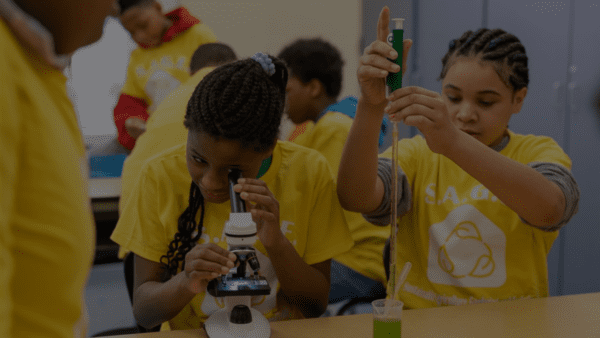As modern society continues to be influenced by advancements in science and technology, the impact and need for Science, Technology, Engineering, and Mathematics (STEM) education cannot be underestimated. Over the past decade at least, research has shown that a nation’s ability to advance and showcase its efficiency globally starts from the strength of its STEM sectors and the infrastructures nurtured within it. Most third-world countries struggle, not because they lack talent, but because other infrastructures are not established to create the advancements required. As the world becomes increasingly interconnected, global STEM initiatives are pivoting towards playing a pivotal role in reshaping the future of education at the local level. The profound impact of these initiatives, especially concerning young talent, is significant.
Undeniably, the global push for STEM education is evident every day, and leading STEM sectors have emerged as driving forces for innovation and economic growth. Because of this, several global initiatives have been launched to promote STEM education at various levels. Organizations, governments, and educational institutions worldwide are collaborating to bridge the STEM skills gap and prepare the younger generation of employees for the challenges ahead. Three powerful advantages to global STEM initiatives on local communities are as follows:
Access to Quality Resources
One primary importance of STEM initiatives on local education is the increased accessibility to top-quality educational resources. Through collaborations and partnerships, various schools in local communities gain access to cutting-edge curricula and technologies that might otherwise be out of reach. Making STEM accessible locally, especially for underserved students, not only levels the playing field but also ensures that students in underserved schools have the same opportunities as their counterparts in more affluent regions. The STEM Greenhouse has aimed to implement this by incorporating vast STEM-friendly programs that foster curiosity and interest in underserved students in Grand Rapids, Michigan.
Empowering Underrepresented Groups
One of the most significant contributions of global STEM initiatives is the focus on inclusivity. Initiatives aimed at empowering underrepresented groups do the heavy lifting of breaking down barriers and creating a more equitable STEM workforce, which is lacking in many ways. This inclusivity extends to local communities, fostering an environment where every student, regardless of their background, feels encouraged to pursue STEM careers.
Nurturing Healthy Community Engagements and Partnerships
Global STEM initiatives can be much more successful if they approach the vision with a community-focused mindset. This includes partnerships between local schools, small businesses, and research institutions. This interconnected approach allows students to participate in real-world projects, internships, and mentorship programs by creating a less complicated transition from education to the workforce. When their immediate communities become active participants in their educational journey, it reinforces the practical applications of their STEM knowledge. One of the most recent initiatives that has sparked conversation around this is the Raise the Bar: STEM Excellence for All Students initiative, an initiative under the Biden-Harris Administration that helps to foster equitable, high-quality STEM education for all students from PreK to higher education, and empower them to be competitive globally.
In a press statement about the launched initiative, the U.S. Deputy Secretary of Education Cindy Marten succinctly ties together the foundation of global initiatives when she said: “Research shows how a sense of belonging in rich and rigorous classrooms is directly correlated to student’s long-term academic success. Moreover, the Department’s Civil Rights Data Collection continues to demonstrate that students of color and students with disabilities are disproportionately excluded from learning opportunities in STEM,” Marten said. “Today, we are saying unequivocally to all students and educators that they belong in STEM and that they deserve to have rigorous and relevant educational experiences that inspire and empower them to reach their full potential as productive, contributing members of our nation’s workforce.”
Over the past decade, research has consistently underscored the positive correlation between global STEM initiatives and improved access to quality educational resources in local communities.
A study published in the STEM Education Journal found that afterschool programming, specifically the ones spearheaded by The STEM Greenhouse, actively fostered STEM excellence in students. The article concluded that there was a growing body of research suggesting a synergy between youth development and STEM learning approaches that can improve outcomes for youth. The study emphasized various afterschool networks across the United States and the frameworks and infrastructures they had in place to improve the quality of STEM programs for their target audience. After examining the national trends as well as analyzing program quality, youth outcomes, and their connections.
The far-reaching impact of global STEM initiatives on local education is profound and serves as a catalyst for more STEM engagement, equipping local communities with the resources they need to empower students on their STEM career paths. By fostering inclusivity, enhancing curricula, and creating innovative learning environments through local partnerships, global STEM initiatives can ensure that the benefits of STEM education are accessible to all, shaping a brighter future for generations. These collaborations are not just investments in education; they are long-term, strategic partnerships for an equitable future in what seems like a never-ending rat race for representation in STEM career fields.
As more global STEM-focused companies become involved with local initiatives, it has also become important to study the priceless role of mentorship in shaping the future of STEM enthusiasts. Mentorship programs established through global initiatives can offer support to students, providing them with insights into the practical applications of STEM skills. These programs can also help to facilitate a seamless transition from academic settings to professional environments, allowing students to confidently scale through challenges in STEM careers. This is something The STEM Greenhouse has fostered through its Sankofa program over the years.
Apart from mentorship, the integration of hands-on learning experiences is a rock-solid approach to incorporating STEM career readiness in youth. Initiatives that promote practical exposure, such as interactive workshops, science fairs, and collaborative projects, ensure that students not only grasp theoretical concepts but also develop crucial problem-solving and critical thinking skills. This holistic approach aligns with the needs of STEM-based careers and the skills needed to adapt to them.
The multifaceted impact of global STEM initiatives extends beyond the immediate accessibility to resources. These initiatives contribute to an ecosystem that nurtures talent, fosters inclusivity, and prepares individuals for successful STEM futures. By emphasizing mentorship, hands-on learning, and adaptability to emerging trends, global STEM initiatives and their resources can help foster a path for a sustainable and equitable future in STEM education.






